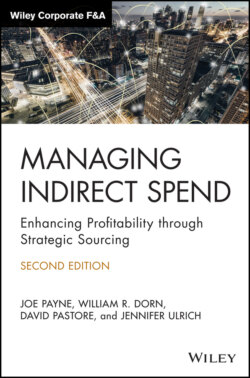Читать книгу Managing Indirect Spend - Joseph Payne, Joe Payne - Страница 35
Understanding the Project Category
ОглавлениеNow that you have end users engaged, it is time to mine them for information. It is likely that the end user is working with the incumbent supply base for a given category on a regular basis, fielding offers and sales pitches from alternate vendors. They probably have at least a basic understanding of the marketplace. This base knowledge has advantages and disadvantages. The key advantages are that the end user can give you a detailed picture of how suppliers work with your organization. They can also give you a good historical perspective on supplier relationships.
What end users probably cannot give you (though they may think they can) is an objective perspective of the marketplace as a whole. After years of managing a category the same way, many people stop exploring alternatives and become closely tied with existing processes. Changing suppliers at a substantial cost savings may be possible, but end users could be reluctant because it would mean they would have to work with the supplier a different way. Even if the new process is more efficient or would mean less work for end users, there could be reluctance if they perceive that they would need to change their internal processes.
It is important to note that it's unfair to characterize all end users as subjective thinkers that care only about maintaining the status quo. Many are objective, have done their homework, and have a great understanding of the marketplace and the opportunities available. Others (whether or not they possess detailed information) are not happy with current suppliers and are ready for a change. Regardless, the critical consideration here is that you, as the project lead, remain objective and do not become tied into old ways of thinking about supplier relationships specifically or the marketplace in general.
As we detailed earlier in the chapter, there are several types of end users. Some could be buyers, others could be Finance people, and still others could be engineers or members of your organization's Operations team. Based on the category and the role of the end user, the types of questions you will want to ask can be very diverse. In Part Four of this book, we detail specific project examples and provide a recommended list of end‐user questions for those examples. In general, there are eight categories you should review with your end users.
1 Business relationship: Understand the initiation, selection criteria used, progression, value, and the short‐ and long‐term direction of the business partnership with the supplier.
2 Product or service: Understand your company's need, use, and application of the product or service being purchased.
3 Locations: Obtain a list of all locations that use this product or service and understand how the supplier's product or service is used in each location, particularly regarding similarities and differences and their ensuing impact.
4 Financial: Understand all costs related to the product or service. These include history of price changes, reasons for discounts, payment terms, who negotiates and when, annual volume, and current and future volume usage.
5 Contractual: Understand the contract terms and language, reason for existence or nonexistence, history, changes since signing, and reasons for such changes.
6 Reports: View and understand the various reports produced (by the supplier as well as internally) to track costs and performance.
7 Service: Understand service standards, expectations and measurement used, service process, level of customer satisfaction, and company satisfaction.
8 Supplier Ranking: Ask the end user to rank the supplier according to commitment to the quality of the product or service, value of the partnership, accuracy, creativity, responsiveness, and assistance.
